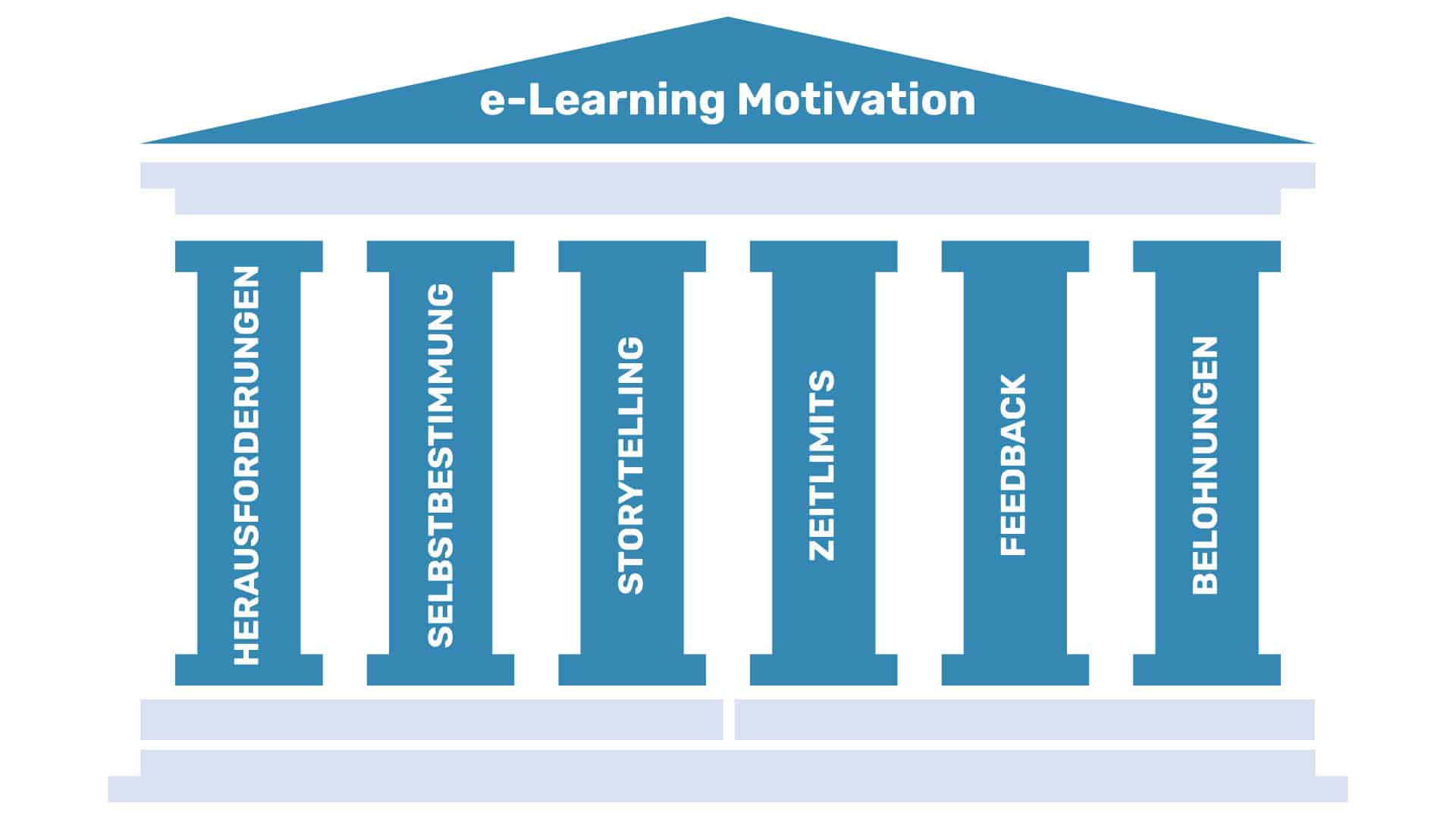e-Learning Motivation
e-Learning motivation: how to keep learners engaged
We present 6 motivating factors for thee-Learning success
The linchpin of learning processes is the motivation of the learners. Especially in the field of e-learning, nothing works without motivational support. What sounds like a truism is unfortunately still given far too little consideration in reality – that is, in e-learning design. The consequences: e-learning offerings in the form of stale presentations that make even the most attentive learners yawn after slide 87. We at skillbest are of the opinion: e-learning can and must be better. That is why motivational factors play a central role in the didactic design of our e-learning solutions. In the following, we would like to give you an insight into our motivational forge and present six factors for guaranteed e-learning success. But before we do that, let’s address a crucial question: What is motivation anyway?
e-Learning Motivation: What the Research Says
Put simply, the term “motivation” summarizes all aspects that stimulate an action or decision. So it’s about getting people to act. If we translate this basic definition for the e-learning sector, it means: It is about getting people to use e-learning offerings actively and profitably. The question of how to achieve this and how to promote (e-learning) motivation has been the subject of research for several decades. One of the best known models linking e-learning motivation and didactic design is Keller and Kopp’s ARCS model. ARCS is an acronym composed of the first letters of the following four elements: Attention, Relevance, Confidence, and Satisfaction. According to the two scientists, these four elements are the central aspects that are needed in the didactic design of e-learning offerings in order to motivate learners. Malone and Lepper provide another, somewhat simpler approach. For them, motivation is promoted with the help of the factors challenges, curiosity, control and imagination. Both approaches differ in detail, but they have one thing in common: they are primarily aimed at promoting intrinsic motivation (motivation from within). This contrasts with extrinsic motivation, in which incentives from outside, such as feedback or recognition, prompt action. We at skillbest are convinced that the didactic design of successful (!) e-learning solutions must include the promotion of intrinsic and extrinsic motivation. We will now show you in detail how we mean it. We present you with three motivating factors each, which form supporting pillars of our e-learning formats.

e-Learning motivation factors
3 factors for intrinsic e-learning motivation
Challenges
It is a widespread misconception that e-learning offers have to be child’s play and completed in just a few minutes. Motivation research clearly shows that learners want challenges. E-learning can therefore also be tricky at times. The best proof of this is our e-learning format skillcards. In this virtual board game, learners must complete tasks and solve puzzles to advance. These little challenges keep the e-learning attention high.
Self-determination
Learners don’t just want to click through presentation slides, they want to navigate actively and self-directedly through the e-learning format. Therefore, it is essential to offer choices and different levels of difficulty. One e-learning offering that addresses all of these points is our skillcube microlearning format. Here, learners achieve success in a playful way with the help of small, adequately prepared morsels.
Storytelling
For thousands of years, stories have captivated people. It’s no different in the e-learning space. Learners want to be part of a story, not just read instruction manuals or fill out forms. We have a successful example of this, too: our skillstory e-learning format focuses on storytelling and presents learning content in the form of exciting stories.
3 factors for extrinsic e-learning motivation
Time limits
For some learners, motivation only increases with a little (time) pressure. Visible time limits such as countdowns or bars have a positive effect on extrinsic motivation and thus on e-learning success. We show how this can work at skillroom, our virtual Escape Room.
Feedback
Learners want to know where they stand – and preferably always and everywhere. To keep e-learning motivation high, feedback is essential. In our new e-learning format skillchat, we rely on live feedback that provides learners with information about their response behavior directly after they have answered.
Rewards
We all love rewards – learners in e-learning especially. Regardless of whether it’s points awards, rankings or trophies: Such incentives are guaranteed to boost motivation. We show how e-learning rewards can look in our e-learning formats skillroom and skillcards, among others.
Let’s talk about how we can motivate your team using e-learning!
